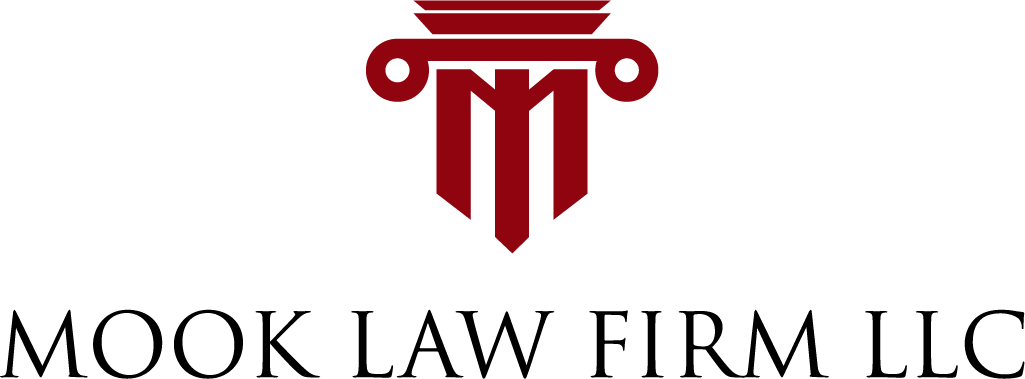
What Evidence Is Needed to Prove a Dangerous or Defective Product Claim?
Whether it’s a malfunctioning appliance, a hazardous drug, or a faulty vehicle part, proving that a product caused harm can be a challenging process. However, with the right evidence, we can make a compelling case that holds the responsible parties accountable.
At Mook Law Firm LLC, located in Kansas City, Missouri, we know how challenging it can be to face a personal injury case involving a dangerous or defective product. These cases often require thorough investigation and solid evidence to prove liability and secure compensation for your injuries.
When you file a product liability claim, it’s essential to gather and present the right type of evidence. This evidence will establish that the product was indeed dangerous or defective and that the defect directly caused your injuries.
Join us as we discuss the types of evidence needed to prove a dangerous or defective product claim in Missouri, from physical evidence to expert testimony, and everything in between.
Types of Defects in Dangerous or Defective Products
Before diving into the types of evidence you’ll need, it’s important to understand the different kinds of product defects that can lead to a claim. In product liability cases, there are typically three categories of defects:
1. Design Defects
A design defect occurs when the product’s original design is inherently dangerous or flawed. This means that even if the product is manufactured correctly, it will still be dangerous. For example, a car with a design flaw that makes it prone to catching fire during an accident would be considered a product with a design defect.
2. Manufacturing Defects
A manufacturing defect happens during the production process when the product departs from the intended design or specifications. This could involve faulty materials or errors made during the assembly. For instance, a batch of toys with small parts that weren’t supposed to be there, making them a choking hazard, would fall under this category.
3. Failure to Warn or Marketing Defects
Failure to warn of defects occurs when a product doesn't come with adequate instructions or warnings about potential risks. For example, a medication that doesn’t warn users about possible side effects or interactions with other drugs may fall into this category.
To win a product liability case, you’ll need to prove that your injury was caused by one of these defects. The following sections will cover the types of evidence necessary for such cases.
Types of Evidence Needed in a Product Liability Case
When you pursue a claim for a defective product, the evidence you present is essential in proving that the product caused harm. The more thorough the evidence, the better your chances of winning your case. Here’s a look at the most important types of evidence you’ll need to gather:
1. Physical Evidence of the Product
The product itself is one of the most important pieces of evidence in a product liability case.
Why physical evidence matters:
It directly shows the defect and its role in causing your injury.
It can be inspected by experts who can analyze the defect in detail.
Physical evidence helps to demonstrate the extent of the harm caused by the product.
Examples of physical evidence:
A defective toy that caused injury
A faulty vehicle part that contributed to an accident
A dangerous drug that caused side effects not listed in the warnings
If possible, you should preserve the product in its original condition. This could mean keeping the defective item, taking photographs, and documenting the state of the product before any repairs are made.
2. Product History and Records
In a product liability case, it’s important to gather records that show the history of the product and the manufacturer. This includes any recalls, complaints, and previous incidents involving the same or similar products.
Why product history matters:
It can demonstrate that the manufacturer was aware of the defect but failed to take action.
It can establish a pattern of defects or incidents with similar products.
It helps to identify whether the manufacturer has taken previous steps to correct the issue or warn consumers.
Examples of records to collect:
Recall notices or bulletins issued by the manufacturer
Consumer complaints or reviews that highlight defects
Testimony or documents from previous lawsuits or settlements involving the same product
Collecting comprehensive records is crucial in building a strong case against a manufacturer. These documents provide valuable evidence that can demonstrate negligence and establish accountability for defective products.
3. Witness Testimony
Witnesses can play a key role in proving that a product was defective and caused your injury. This includes both eyewitnesses who saw the injury occur as well as experts who can testify to the defect itself.
Why witness testimony matters:
Eyewitnesses can help establish the circumstances surrounding the accident.
Expert witnesses can testify to how the defect caused harm and its potential dangers.
Examples of witnesses:
Eyewitnesses who saw you injured by the defective product
Experts in engineering, design, or manufacturing who can explain how the defect occurred
Medical experts who can link the injury to the defect
Gathering evidence and testimony is a vital step in building a compelling case for defective product claims. By thoroughly documenting the defect and its consequences, you can strengthen your position and hold the manufacturer accountable.
4. Medical Records
If you were injured by a defective product, your medical records will be crucial in establishing the extent of your injuries.
Why medical records matter:
They help establish the severity of the injury caused by the product.
They show a direct connection between the defective product and your injury.
Medical experts can use these records to support your claim of harm.
Examples of medical records to gather:
Doctor’s notes that describe the injury and its connection to the product
Hospital records showing treatment for injuries caused by the defect
Test results or imaging studies that document the injury
These records will document the treatment you received and help to demonstrate how the injury directly resulted from the defect.
5. Expert Testimony
In many product liability cases, expert testimony is vital to explain how a defect in the product caused harm.
Why expert testimony matters:
Experts can provide an objective opinion on the defect and its dangers.
They can explain complicated technical or scientific information to the court.
Their testimony can strengthen your case and make it easier to prove causation.
Examples of experts who may testify:
Engineers who can explain how a design defect occurred
Manufacturing experts who can identify flaws in the production process
Medical experts who can link your injury to the product defect
Experts can be used to demonstrate how the product malfunctioned and why it was dangerous. Their testimony can also explain the scientific or technical aspects of the defect.
6. Photographs and Videos
Visual evidence can be very powerful in product liability cases. Photographs and videos of the product, the scene of the accident, and the injuries you sustained can help paint a clear picture of what happened.
Why photographs and videos matter:
They provide visual proof of the defect and its impact on your injury.
They can serve as persuasive evidence in court, especially when showing the severity of the defect or injury.
Video footage can help demonstrate how the product malfunctioned.
Examples of photographic and video evidence:
Photos of the product and the defect
Video footage from the scene of the accident
Images of your injuries or the consequences of the malfunction
It’s crucial to work with a personal injury attorney who has experience in product liability cases. They can help you gather the necessary evidence, work with experts, and make sure your case is as strong as possible.
Contact Us Today
If you’ve been injured by a dangerous or defective product, Mook Law Firm LLC in Kansas City, Missouri, is here to help. Our personal injury attorney is dedicated to fighting for your rights and helping you secure compensation. We serve clients in Kansas City, Missouri, and surrounding areas. Reach out to us today to discuss your case.

